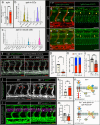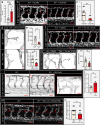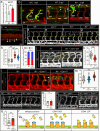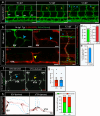Parenchymal cues define Vegfa-driven venous angiogenesis by activating a sprouting competent venous endothelial subtype
- PMID: 38600061
- PMCID: PMC11006894
- DOI: 10.1038/s41467-024-47434-x
Parenchymal cues define Vegfa-driven venous angiogenesis by activating a sprouting competent venous endothelial subtype
Abstract
Formation of organo-typical vascular networks requires cross-talk between differentiating parenchymal cells and developing blood vessels. Here we identify a Vegfa driven venous sprouting process involving parenchymal to vein cross-talk regulating venous endothelial Vegfa signaling strength and subsequent formation of a specialized angiogenic cell, prefabricated with an intact lumen and pericyte coverage, termed L-Tip cell. L-Tip cell selection in the venous domain requires genetic interaction between vascular Aplnra and Kdrl in a subset of venous endothelial cells and exposure to parenchymal derived Vegfa and Apelin. Parenchymal Esm1 controls the spatial positioning of venous sprouting by fine-tuning local Vegfa availability. These findings may provide a conceptual framework for understanding how Vegfa generates organo-typical vascular networks based on the selection of competent endothelial cells, induced via spatio-temporal control of endothelial Kdrl signaling strength involving multiple parenchymal derived cues generated in a tissue dependent metabolic context.
© 2024. The Author(s).
Conflict of interest statement
The authors declare no competing interests.
Figures









References
MeSH terms
Grants and funding
LinkOut - more resources
Full Text Sources
Molecular Biology Databases

